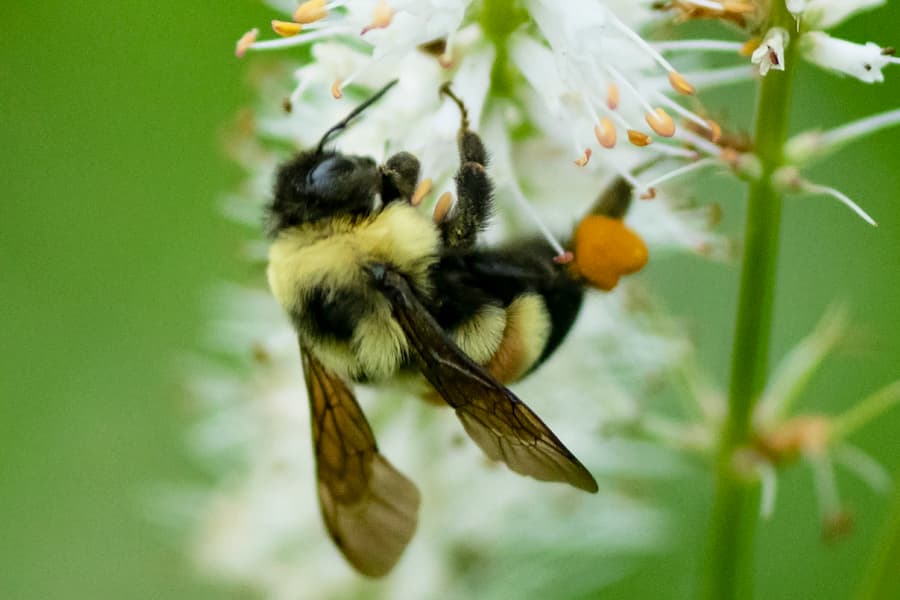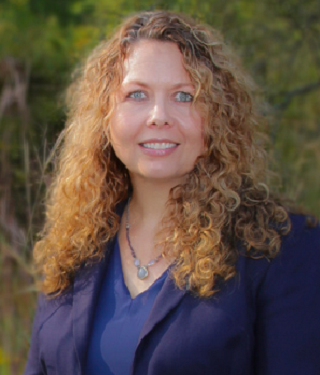Bee Campus USA
Think Global,
Act Local.
Providing the framework to help bees.
We're working together to conserve native pollinators by increasing the abundance of native plants, providing nest sites, and reducing the use of pesticides. Rally to protect pollinators and bring your community together to create positive change!

Bee Campus USA
UW-Green Bay received the designation of Bee Campus USA in 2021, with over 30 acres of planted native pollinator habitat on our Green Bay campus. Learn more about these tiny buzzers, how you can help them, and who to turn to with questions.
Native Bee Facts
Did you know that bees transfer pollen between flowers? These little pollinators are keystone species in essentially every ecosystem on earth! Here are some bee-utiful bee facts:
- Bee pollination helps reproduction of over 85% of all flowering plants and 67% of agricultural crops.
- There are 20,000+ described species of bees globally, and around 3,600 species of bees native to the United States.
- Wild bees are different from the domesticated honey bee – most of them live solitary lives, with a single female doing all of the work to build a nest, collect pollen and nectar, and lay eggs.
- More than two out of three wild bees live underground in hard-to-spot nests, digging down to lay their eggs several feet below ground or making nests near the soil surface or in hollowed out plant stems.
While bees are the most important pollinator, butterflies, moths, beetles, flies, wasps, and hummingbirds also contribute to pollination. Research has shown significant declines in native pollinator population sizes and ranges globally. During the past few years, there have been calls to action both nationally and internationally to reverse pollinator declines, as up to 40% of pollinator species on earth are at risk of extinction in the coming years due to environmental stressors including:
- Habitat loss
- Exposure to pesticides
- Diseases and pathogens
- Climate change
Resources to Help their Habitat
How can you help? Plant native plants to increase native bee habitats. Here are some points to consider:
- Plant flowering plants from this native plant list (pdf).
- Plant a variety of species with overlapping blooms in order to offer resources throughout the growing season.
- Avoid using pesticides.
- Encourage your neighbors, family and friends to plant pollinator friendly, native plants too!
We also have a limited selection of native pollinator plants available at our Heirloom Vegetable Sale held in May. Here are a some local native plant suppliers:
Bee Campus Committee
Our committee includes a mix of students, faculty and staff, and meets on a regular basis. A member of the grounds or landscaping department serves on the committee to facilitate communication between the committee and those involved in campus landscaping. Our Committee members are:

Sustainability Contacts
- John Arendt, Office of Sustainability Director, arendtjo@uwgb.edu
- Holly Keener, University Executive Staff Assistant, kennerh@uwgb.edu
- Karen Stahlheber, Assistant Professor - NAS, stahlhek@uwgb.edu
- Norah Swenson, Student

Have Questions?
Contact John Arendt, our Sustainability Coordinator, to discuss your interest, concerns or ideas about sustainability at UW-Green Bay.